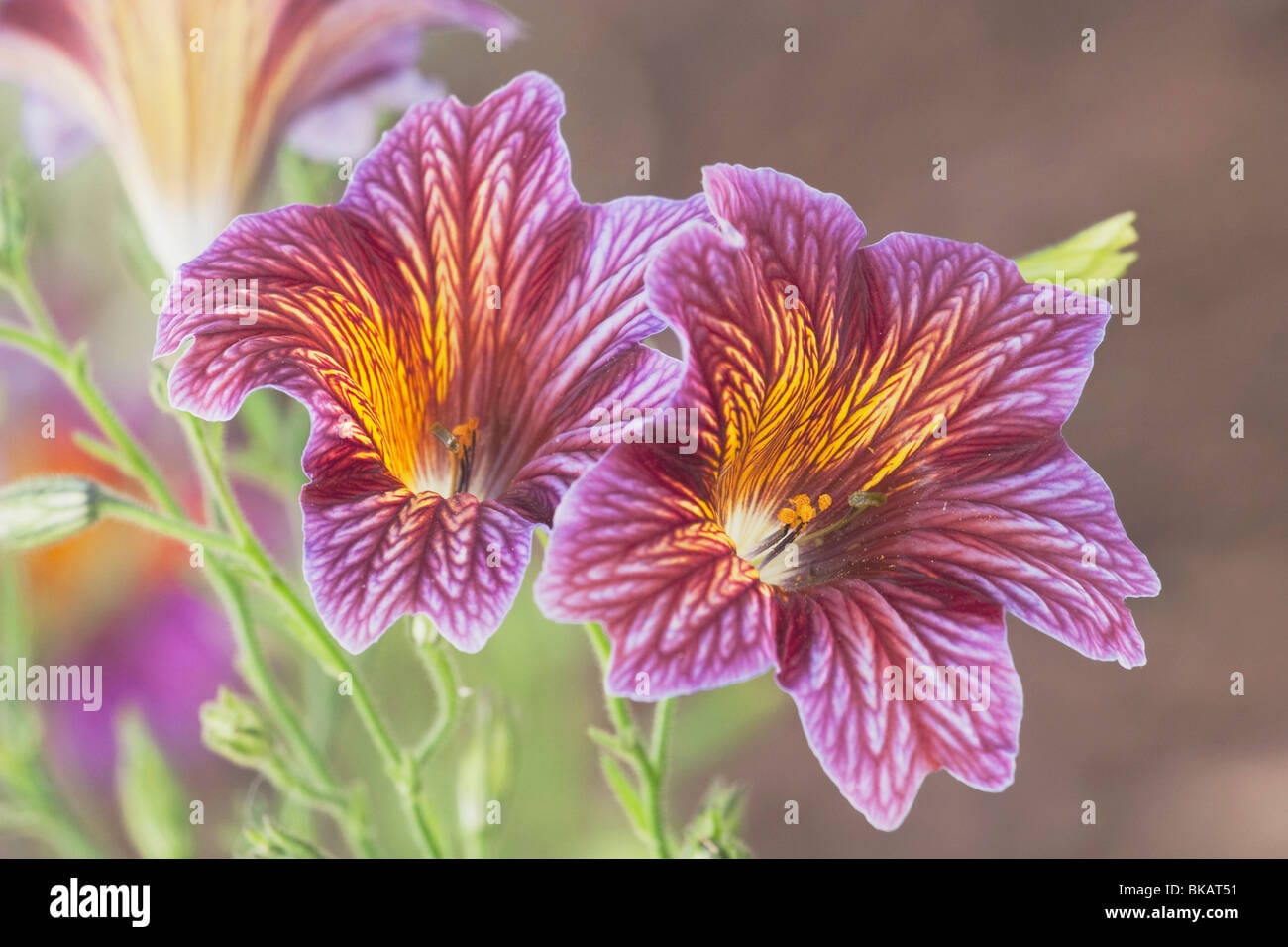Mimulus, the charismatic “monkey flower,” enchants gardens with its vibrant, trumpet-shaped blooms and easy-going nature. From vibrant yellows to fiery scarlets, Mimulus species offer a kaleidoscope of color for summer-long garden delight. Dive into the captivating world of Mimulus and discover how to bring these charming blossoms to your own garden.
Discovering the Delightful Mimulus
Imagine a flower that resembles a monkey’s cheerful grin – that’s the Mimulus, also known as the Monkey Flower or Musk Flower! Native to North America, Mimulus thrives in moist environments and attracts pollinators with its unique blossoms. With over a hundred species and countless cultivars, there’s a Mimulus to suit every garden style. Some, like the common monkey flower (Mimulus guttatus), are resilient and familiar, while others, like the scarlet monkey flower (Mimulus cardinalis), boast vibrant hues. The ‘Magic Series’ offers compact plants overflowing with blooms in a range of sunny colors.
A Closer Look at Mimulus Varieties
- Mimulus guttatus (Common Monkey Flower): This short-lived perennial, reaching up to 30cm tall, features spreading stems, toothed oval leaves, and bright yellow trumpet-shaped flowers, often speckled with red. Its adaptability makes it a favorite among gardeners.
- Mimulus cardinalis (Scarlet Monkey Flower): Known for its fiery scarlet blooms, this upright perennial can be grown as an annual in colder climates. It spreads via creeping rhizomes and prefers moist soil.
- Mimulus ringens (Allegheny Monkey Flower): This Mimulus species (more research recommended) adds to the diverse range of colors and forms within the genus.
- Mimulus ‘Magic Series’: These dwarf, spreading plants are typically grown as annuals or biennials, reaching a height of 20cm. They are renowned for their profusion of blooms in sunny yellows, pinks, and oranges.
- Mimulus aurantiacus (Bush Monkey Flower): This species (more research recommended) expands the range of Mimulus with its unique characteristics and growing habits.
Cultivating Mimulus: A Gardener’s Guide
Mimulus plants are refreshingly low-maintenance, making them ideal for both novice and experienced gardeners. They appreciate moist, well-drained soil and thrive in partial shade but can tolerate full sun with sufficient moisture. Regular watering, especially during dry periods, keeps them flourishing.
Essential Growing Tips
- Watering: Mimulus prefers consistently moist soil, so water regularly, particularly in hot weather. Check the soil with your finger to ensure it doesn’t dry out completely. Overwatering can lead to root rot, so ensure good drainage, especially for potted plants.
- Sunlight: While adaptable, Mimulus generally prefers partial shade, especially in warmer climates. They can tolerate full sun in cooler regions, but watch for signs of stress like scorched leaves.
- Soil: Well-drained soil is essential for healthy Mimulus growth. Amend heavy clay soil with organic matter like compost to improve drainage and moisture retention.
- Fertilizing: A balanced liquid fertilizer, applied every few weeks during the growing season (spring and summer), provides the nutrients for abundant blooms. Avoid over-fertilizing, which can lead to excessive leafy growth and fewer flowers.
Propagation: Expanding Your Mimulus Collection
Propagating Mimulus is relatively easy, often done through stem cuttings. Cut a healthy stem just below a node, remove the lower leaves, and place it in water or moist potting mix. Roots should develop within a few weeks, and you’ll have a new Mimulus plant to enjoy or share. More advanced techniques, like seed starting, can also be explored (further research recommended).
Maintaining Mimulus Blooms
Keeping your Mimulus flowering is a simple yet rewarding process. Regular deadheading (removing spent blooms) encourages the plant to produce more flowers rather than seeds, extending the blooming period. Other factors, like sufficient sunlight and proper watering, also play a crucial role in continuous flowering.
Mimulus in the UK Climate
The perennial nature of Mimulus in the UK depends on the variety and the specific climate. Hardy varieties, like Mimulus guttatus, are likely to return each spring, while tender varieties, like Mimulus cardinalis, might not survive harsh winters and need to be replanted as annuals. Planting in sheltered locations or providing winter protection with mulch offers greater chances of survival.
Effortless Beauty: The Ease of Growing Mimulus
Mimulus is a remarkably easy-to-grow plant, adaptable to various locations and tolerant of both moist and dry conditions, although consistent moisture is ideal. Their low maintenance makes them a great choice for beginners, while their vibrant blooms appeal to seasoned gardeners. They’re versatile enough for gardens, containers, and even indoor growing with adequate sunlight. Not only do their nectar-rich flowers attract pollinators, but their compact size and spreading habit suit various garden designs, from containers to groundcovers.
Troubleshooting and Ongoing Research
While generally pest and disease-resistant, aphids can occasionally be a nuisance. Address these with a gentle water spray or insecticidal soap. Ongoing research continually enhances our understanding of Mimulus care, providing further insights into optimal growing conditions and specific cultivar needs.
Resources and Further Exploration
For more in-depth knowledge, consider exploring these excellent resources:
- RHS: https://www.rhs.org.uk/
- Seasonal Gardening: (Link Needed)
- The Spruce: https://www.thespruce.com/
- GardenBeast: https://www.gardenbeast.com/
- YouTube: Search for “Mimulus propagation” or “Mimulus care”
Mimulus monkey flower enthusiasts might also be intrigued by another aquatic species with a similar name – the monkeyface prickleback. Although vastly different, both species possess unique qualities that make them stand out. For those seeking a low-maintenance, evergreen shrub, the ligustrum waxleaf privet is an excellent choice.
By following these guidelines and exploring the diverse world of Mimulus, you can cultivate a thriving display of these captivating monkey flowers and enjoy their vibrant beauty throughout the growing season.
- Mastering Leader in Spanish: The Complete Guide - April 19, 2025
- Uncovering Surprising Parallels: England Size Compared to US States - April 19, 2025
- Old Mexico Map: Border Shifts 1821-1857 - April 19, 2025

















1 thought on “Mimulus Monkey Flower: A Comprehensive Guide to Growing and Care”
Comments are closed.